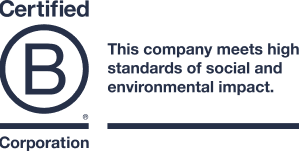There are currently more than 400 ecolabels in use across 25 industry sectors. It’s no wonder that consumers can feel confused about what exactly a label means — and which ones to trust. Brands that make eco-friendly claims on their products should ideally back them up with the appropriate certifications for their industry. Consumers can look for certification labels directly on product packaging and are always encouraged to research the associated organizations and their certification standards.
In the United States, for example, the USDA is the governing body that decides whether food items are considered “organic.” As such, consumers will want to look for the appropriate corresponding USDA Organic label. Products that are presented as “green” should ideally sport the Green Seal label, which certifies that a product is free of chemicals that are harmful to the ozone layer, made from sustainable resources and generally sourced locally.
Another common ecolabel consumers may see is the Fair Trade Certified label. This means a product was created using agricultural diversification, that the company offered farmers better wages and that products were grown using minimal pesticides.
Products may also be labeled as “free of” specific harmful substances if they do not contain those substances, or when they are only present in trace amounts. Product labels may also state when a product is made from recycled materials, or when it is made using renewable materials, which can be produced over a short period of time using natural processes.

